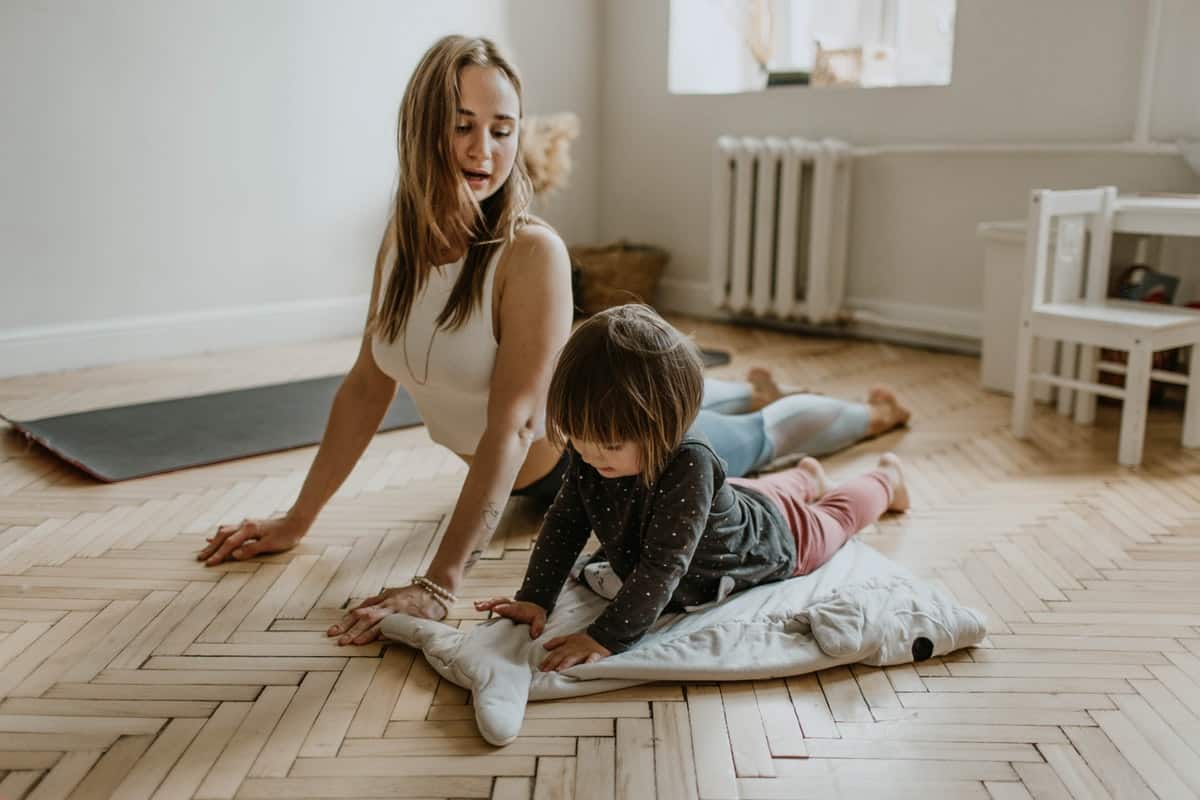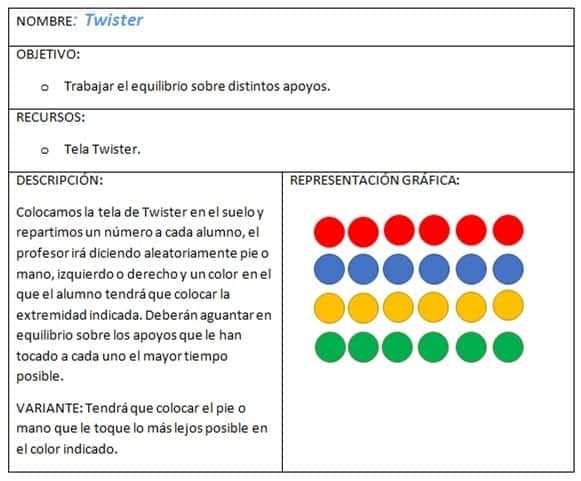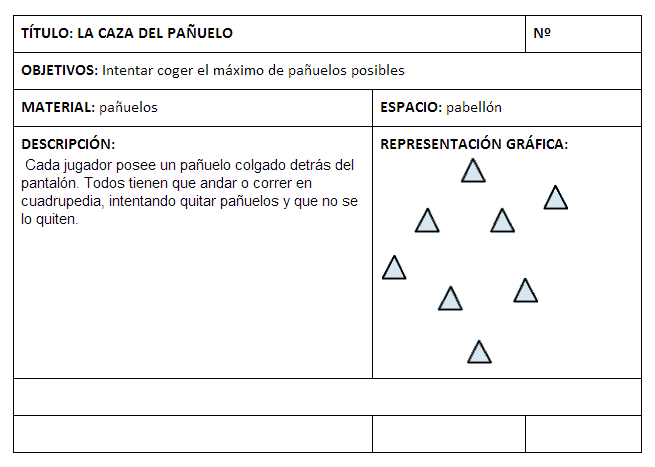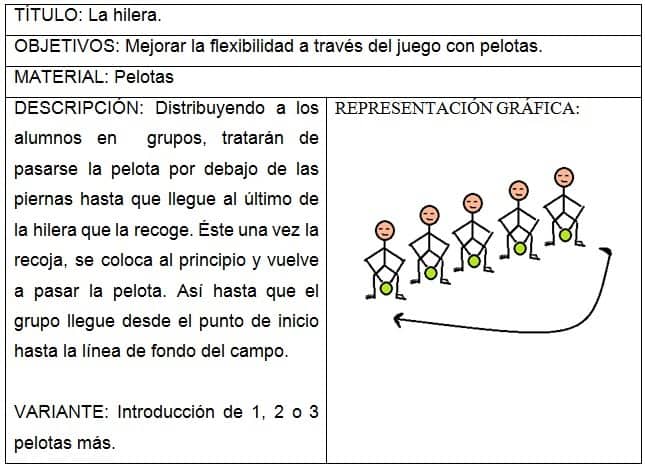In this article, we analyze the flexibility games in physical education.
The flexibility games are included within the games for primary education. They are usually performed in the area of physical education with children to work on the basic physical capacity referred to.
We explain what flexibility is, its importance at school age, and teach you flexibility games in physical education and how to develop it both within the educational field and outside of it.
What are flexibility games?
First of all, it seems necessary to define what we understand by flexibility. According to Martínez del Haro, it is the range of motion of a joint or several within their natural limits.
Flexibility is the ability of the joints to have a certain range of motion.
It is the capacity that, based on joint mobility and muscle elasticity, allows the maximum range of motion of the joints in various positions, enabling the individual to perform actions that require agility and skill (1).
The justification for working on flexibility as part of physical conditioning sessions is justified by the relationship that has always existed between flexibility and its benefits, among which we can highlight the following (2):
- increasing muscle temperature
- reducing pain
- increasing the range of motion of a joint
- increasing stretch tolerance
- assisting in the cool-down and recovery of the body after intense effort
- reducing the risk of injuries
- improving performance, especially in sports that require very wide ranges of motion, such as gymnastics and martial arts.
As we can see, it has multiple benefits, so it would be ideal to carry out flexibility games in physical education in the classroom to improve this physical capacity from an early age.
What types of stretches exist?
Different types of stretches that work on flexibility stand out:
- ballistic stretches: these are rhythmic bouncing, throwing, or swinging movements that result in a significant increase in muscle length per unit of time.
- dynamic stretches: these can increase muscle temperature, and this increase allows for greater and faster muscle contraction. This, in turn, causes an increase in the speed of nerve impulse transmission.
- static stretches: the movement and elongation occur in a way that the position of the stretch is maintained.
- active tension stretches: a joint action of muscle stretching and isometric contraction occurs at the same time.
- proprioceptive neuromuscular facilitation: it is a technique that favors the neuromuscular mechanism thanks to the stimulation of proprioceptors.
The technique consists of the following: first, an active-assisted stretch of the muscle is performed for about 10 seconds.
Then an isometric contraction for 6 seconds and after that a relaxation of several seconds (2-3).
Finally, and before repeating the cycle, a stretch of greater joint amplitude is performed, with contraction of the antagonist muscle, for about 10 seconds.
Flexibility games for children
In primary and secondary physical education, flexibility can be worked on in isolated sessions or within the work of a specific sport.
Finally, and perhaps most commonly, as part of the “Physical Condition and Health” block through flexibility games in physical education.
With this block, physical education aims to contribute to the acquisition of knowledge and skills about certain healthy habits that will accompany children and adolescents beyond the compulsory stage (3).
Furthermore, as mentioned earlier, it aims to achieve the objectives of both the content of physical education itself and the improvements and benefits linked to the work of physical capacities and, in this case, flexibility.
It should be noted that flexibility improves up to the ages of 12-14, but after this, it gradually decreases.
For all these reasons, it is essential that physical education teachers develop content related to flexibility work within their classes.
In this way, and looking towards adulthood, students will not have flexibility problems and, with this, will not have as many possibilities of injury or serious pathologies (3).
Flexibility games in physical education
We can classify flexibility games in physical education, taking into account the age of the subjects. Below we detail these games.
Flexibility games in physical education for children aged 6-9 years
- Games of imitation and imagination where flexibility is worked on, along with expression and coordination (4):
-
-
Games with different positions, where at the signal of the teacher or the adult working with them, different movements are performed: for example, starting with jumps from an imaginary box and upon leaving the box, they have to stretch different muscle groups. Games where joy, sadness… are represented through dance and pauses with stretches are made.
- In groups of 3-4, they perform a small dance where figures requiring a good range of motion appear.
-
-
Flexibility games in physical education for children over 10 years
- From 10 years onwards, specific sports games can be used, and simulations of them can be made with alternative materials. For example:
-
- “The regatta”: The students are divided into two rows. The first in each row takes a ball and passes it to the person behind, turning the torso and placing it on the ground. The next in line picks it up from the ground and does the same. And so on. The team that manages to get the ball to the last member of the group first will win (5).
- Variants: turning the torso, passing the ball under the legs, over the head, etc.
- “The regatta”: The students are divided into two rows. The first in each row takes a ball and passes it to the person behind, turning the torso and placing it on the ground. The next in line picks it up from the ground and does the same. And so on. The team that manages to get the ball to the last member of the group first will win (5).
-
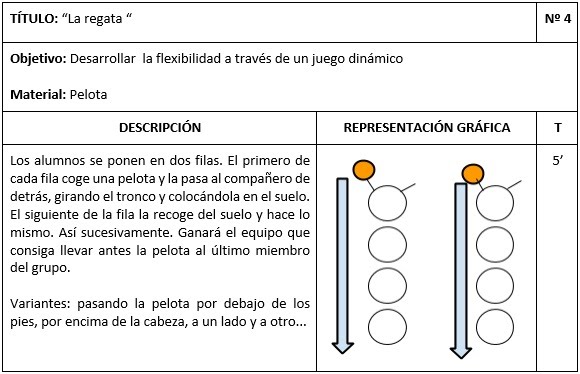
-
-
- “The crab race”: in groups of 3-4, they aim to reach a cone walking in a crouched position, touch it, and return running with relays. The team that manages to do it the fastest will be the winner. The members of each group line up. The first of each team will try to reach the cone and return before the rest, when they reach the start and meet their teammate, they will high-five so that the latter can start.
- “The twister“: in this flexibility game, the children must place their supports (both hand and foot) on the colors that are assigned. They must maintain balance for as long as possible.
-
-
- “The limbo”: it can be done in a large group or subgroups. The goal is to pass under the stick without touching it with any part of the body. Two participants hold a stick, while the rest have to pass under it by leaning their torso backward. When a child touches the limbo, they are eliminated. Once all participants have passed, it is lowered a bit more. The last player remaining will be the winner. Variants can be applied, and not eliminate, do it with music and follow the rhythm, etc.
- “The handkerchief hunt”: through this flexibility game, students place a handkerchief on the back of their pants. They are positioned throughout the gym and must all move on all fours, avoiding having their handkerchiefs stolen and stealing as many as possible.
- “The row”: In this flexibility game, the children line up and try to pass the ball under their legs until it reaches the last in line. Then they move to the front and pass the ball back again.
-
Most flexibility games in physical education are useful for all ages.
The important thing is to modify them to create variants that adapt to the characteristics of the students or participants being worked with, whether they are 8 or 16 years old.
These flexibility games in physical education should be carried out in the most motivating way possible and involve, in one way or another, the work and development of flexibility.
Conclusions
In conclusion, it can be said that flexibility is fundamental as part of physical condition. Therefore, it is important to work on it through flexibility games in physical education.
It is necessary to work on it from childhood so that, before starting to lose it, it can be maintained and even improved through games and training.
Flexibility games in physical education are a great alternative practice for the development of flexibility and a novel and motivating option for students.
Bibliography
- Muñoz, D. (2009). Basic physical capacities. Evolution, factors, and development. Practical sessions. Efdeportedeportes,(1), 1.
- Ayala, F., de Baranda, P. S., & Cejudo, A. (2012). Flexibility training: stretching techniques. Revista andaluza de Medicina del Deporte, 5(3), 105-112.
- Sainz de Baranda Andújar, P. (2009). Flexibility work in physical education: Intervention program. Cultura_Ciencia_Deporte [CCD], 4(10).
- Suárez, M. (2015). Playful activities for improving flexibility in girls aged 3 to 5 years in the State of Anzoátegui, Vista del Mar municipality, Venezuela. EFdeportes, 20 (205).
- Machín, R. (2010). Flexibility games in physical education. EFdeportes, 14 (141).
